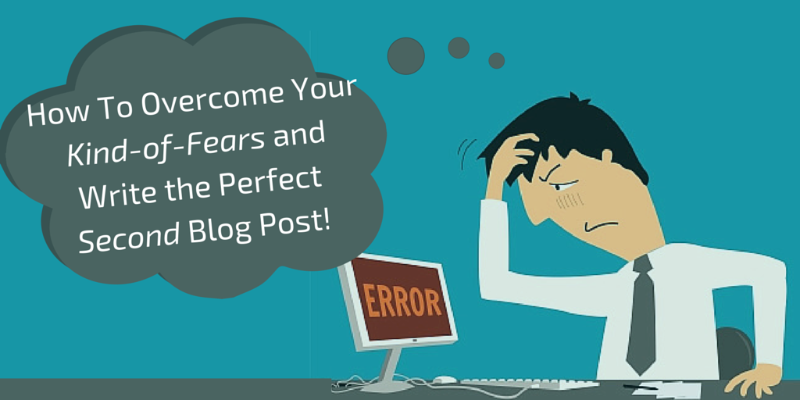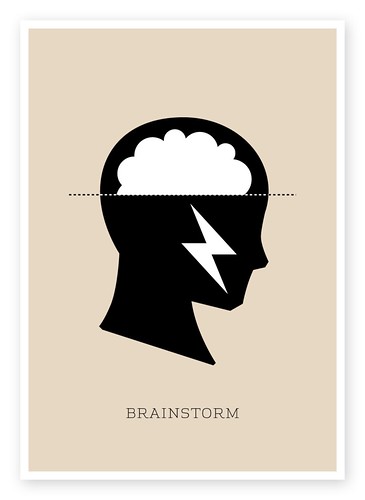One of the blog posts I get a lot of comments and questions on is actually the very first blog posts I ever wrote for Spokal. Faced with the daunting task of what to write for my very first blog post, I kind of went a bit meta and wrote on the topic: “How To Overcome Your Fears And Write The Perfect First Blog Post”. Get it? Because that’s exactly what I was doing? Well, I thought I was clever, anyways. And I guess I was because we still get so much engagement on it! (More than any of my following blog posts probably… beginner’s luck? Oops).
Anyways, that blog post needed a part 2. I knew it. Our readers knew it. But I just didn’t know how to move on from there. “How To Overcome Your Kind-Of–Fears and Write the Perfect Second Blog Post” just didn’t seem to make sense to me.
But that’s when I realized that the reason it was so hard to write the second part to that blog post was because the ideal thing for my readers to be doing at that point, was to not read another blog post, but instead just write their own.
There couldn’t be a second blog post because, well, that defeated the purpose of the first!
But the reality was that not everyone left that blog post and started writing their own, which means that I didn’t do my job successfully. So, we’ve more work to do to make sure you start writing your first blog post today.
Step 1:
We Both Need To Get Over The Fact That You & I Are Being Totally Contradictory In The Reading AND Writing of This Blog Post
Ok, so the first step is calling attention to the fact that this blog post, for all intents and purposes, is slightly ridiculous.
Why would someone write a blog post encouraging people not to read it? It doesn’t make sense!
Yes, I know.
But here’s the thing: The headline of the post “stop reading this blog post and start writing your own” is advice that people sorely need if they’re stuck. But, it just might not be enough to convince you. So, whether you, dear reader, are going take that piece of advice from the headline alone, or you want to do some further reading, that’s fine with me!
As long as, by the end of this blog post, you’ve promised yourself that you’ll finally press that “x” button in the left hand corner of your screen so you can finally get to work on writing your own blog post.
Step 2:
Admit That You’re Procrastinating
“Everyone procrastinates, but not everyone is a procrastinator” is one of my favorite sayings, because it tells us about human nature. We all delay taking action, but, usually, it doesn’t define us. It’s not a habit. It’s not something we do all the time.
Only about 20% of the U.S. population are procrastinators, so the chances are, you’re not one of them. Procrastinating, what you’re doing right now, isn’t a habit of yours. So, it’s important to ask yourself, why haven’t you written your first blog post yet?
And I know it’s tempting to start listing your reasons right now…
You need to do more work on the website first. You need to do more research before you put pen to paper. You need to figure out how to work so-and-so’s software. You need to align your blogging goals with that of your business’ goals.
But here’s the reality: You’ll never be prepared to write your first blog post. You know why? Because there’s always going to be a great reason why you should do it tomorrow.
Step 3:
Talk To Yourself (i.e. Get Out Of Your Brain, And On To The Paper)
Ok, so you realize that you shouldn’t be reading this blog post. You’ve also admitted that you’re procrastinating. And, well, you’re still here.
Maybe you’re just a little bit curious about what I’m going to say (me too!). Maybe you’ve promised yourself that this truly is the last blog post you’re going to read before you write your own. Or, maybe, you’re still not able to write your first blog post.
Well, that’s all just fine and dandy with me.
But, be warned: Things are about to get weird.
My next piece of advice is to talk to yourself (hey, I warned you it was about to get weird!). But, before you run away thinking I’m crazy, let me tell you why you should talk out loud to yourself.
According to Dr. Linda Sapadin, talking to yourself out loud is actually a sign of sanity, and can even make you smarter.
According to Sapadin, talking to yourself has 4 benefits:
- Boosts your confidence.
- Motivates you.
- Outer dialogue can help you make better decisions.
- Goal-setting (and sticking to it) by keeping yourself verbally on task.
Now, if you’re still reading this blog post, the chances are that you’re having a problem with one of those 4 things.
The problem is that you’re stuck inside your head, and you need to get out of it… and the page just isn’t the inviting place that you need right now. But, maybe verbalizing it is. Once you can speak it, you can write it.
Oh, and if you’re really brave, record it. Then you can transcribe some of what you can express verbally into something written.
Doesn’t seem so crazy now, does it?
Step 4:
It’s Time To Start A Serious Brainstorm Session
Ok, so you’re pep talk hasn’t helped, and you’re still feeling a little unsure as to how to proceed. Well, you might want to revisit your blog’s topic idea, then.
The thing is, if you love your blog’s topic enough, you’ll have started writing about it already. When there’s a blog post idea that I completely adore, I find it hard to stop myself from going straight to a new word document and writing it out there and then. Well, “I find it hard” isn’t really accurate, because I don’t actually ever stop myself from doing just that.
You should feel passionate and excited by what you’re about to write. If you don’t, then maybe you need something new.
I wrote a basic brainstorming technique in the previous part to this blog post, but you’ve obviously tried that and it hasn’t worked so here’s a few others that might get the creative juices flowing:
- I Challenged Myself to Create 100 Blog Post Ideas in 30 Minutes. This blog post does exactly what it says on the tin – it’s a challenge to create 100 blog posts in 30 minutes. It’s a little scary (I was literally sweating) but it’s well worth the results! (Which I included)
- Associative Brainstorming. Associative brainstorming allows you to take an idea (the one you probably don’t love), and start making strenuous connections between it and other ideas). This really pushes you out of the box, so if you’re truly stuck, it might be a good option.
- Mind Mapping. Mind mapping is my go-to in terms of brainstorming. It’s super simple, all you have to do is draw your central topic in the middle (in this case, your blog’s focus) and then write out “sub-topics”.
Different types of brainstorming affects people differently, you may just need to try a few before you find one that suits you (and your brain).
Step 5:
Start Writing.
Write Anything, Right Now.
Still here? Ok. Let’s try this.
Open up a word document.
…
Good.
Now start writing something.
Anything.
Just write.
Right now.
Do it!
…
Did you do it?
Good.
Now go back to that word document and write something else.
Anything.
Just write what’s on your mind.
Go on.
Right now.
Write.
…
Did you do it?
Perfect.
Now…
Just a few final words.
Conclusion
You are awesome and you can do this! Writing a blog post for the first time can be super scary and intimidating, but just remember: There’s thousands – if not millions – of people out there who’ve done it already and they’re lives are the same (if not better off) because of it.
Remember, if you’re feeling anxious to start writing your first blog post, you can always edit it until it’s within an inch of perfection, delete it or update it at a later date. Blog posts are organic pieces of work that often change with time.
There Is No Such Thing As Great Writing, Only Great Re-Writing
– Ernest Hemingway
So, here we are. There’s nothing else here for you to read. You are ready to get your thoughts down in written form now.
You can do this.
And afterwards, I want you to come on back and share the link to your blog post, and – if you do this within the month of this post being published – I promise to read it and give you some feedback on it too.
Now, take your mouse and start guiding it up to the right hand corner of your browser. Nearly there. You can do it. Are you hovering over the “x” on your browser? Great… Click it!





